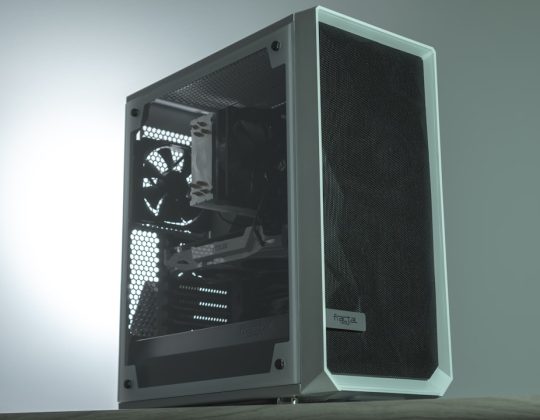As artificial intelligence systems become more powerful and integrated into critical industries, the need for well-structured agent operations—commonly referred to as Agent Ops—has become increasingly urgent. AI agents that perform tasks autonomously must be designed with safeguards to avoid unintended consequences, biases, or unsafe outcomes. In this article, we dive deep into how organizations are implementing guardrails to ensure AI agents remain aligned with human values, maintain ethical integrity, and operate within defined boundaries.
What Are AI Agents?
AI agents are software entities that perform actions autonomously to achieve specified objectives. These agents can range from simple rule-based bots to highly sophisticated, multi-modal systems capable of reasoning, interacting, and learning from their environment. Their use spans a wide array of domains, including customer service, cybersecurity, healthcare, and finance.
Unlike traditional software programs, AI agents often learn from data, evolve their behaviors over time, and operate in unpredictable environments. This makes it critically important to apply safe design practices to guide and constrain their behavior—what we refer to as “guardrails.”
The Need for Guardrails
Without proper oversight, AI agents can deviate from their intended mission, make unethical decisions, or magnify existing social and institutional biases. Guardrails refer to the technical and procedural controls that can be layered into an agent’s design to prevent harmful outcomes. Key reasons why guardrails are essential include:
- Safety and reliability: Preventing unsafe actions during autonomous operation.
- Ethical alignment: Ensuring the agent’s actions are consistent with accepted moral standards.
- Regulatory compliance: Operating within legal boundaries, such as data privacy laws and industry standards.
- User trust: Promoting transparency and interpretability to build user confidence.
Designing Agent Ops With Guardrails
Establishing guardrails for agents is not a one-time effort but a holistic and continuous discipline involving multiple stages of design, deployment, and iteration. Below are key components of effective Agent Ops when designing with guardrails:
1. Environment Mapping and Objective Clarification
Before designing any AI agent, it’s crucial to deeply understand the environment where it will operate and the objectives it is expected to optimize.
- Identify variables that affect decision-making (e.g., user data, environmental inputs).
- Clarify objectives and potential trade-offs (e.g., efficiency vs. transparency).
- Simulate edge cases where unethical or unintended outcomes might arise.
A clear mapping process allows the engineering team to anticipate potential issues and define boundaries accordingly.

2. Multi-Layered Guardrails
The most robust systems employ multiple layers of controls to restrict, monitor, and guide agent behavior. These include:
- Policy-based constraints: Embedding rules that outright prohibit certain actions (e.g., accessing user PII without authorization).
- Behavioral filters: Using pre-trained classifiers or scoring functions to detect offensive, biased, or unsafe outputs.
- Human-in-the-loop systems: Involving human oversight in high-risk decisions or ambiguous situations.
- Token-level moderation: Adding real-time moderation during response generation at the language-model level.
Each added layer makes the system more resilient but must also maintain performance and user experience standards.
3. Auditing and Telemetry
To manage AI behavior effectively, constant monitoring and logging are essential. Telemetry data helps engineers understand how the agent behaves in real-world situations, making it easier to trace errors or deviations when they occur.
- Logging interactions: Captures user inputs, agent responses, and decision pathways.
- Anomaly detection: Flags deviations from established benchmarks or previous behavior patterns.
- Replay systems: Allow engineers to revisit and audit decisions post hoc for further analysis.
Metrics such as task success rates, user satisfaction scores, and intervention frequency also provide quantifiable indicators of system performance.
4. Continual Learning With Safeguards
Modern AI agents often operate under learning frameworks to improve over time. While this adaptivity increases effectiveness, it also opens doors to unintended behavior if not properly governed. Therefore:
- Restrict the learning scope to approved datasets or use reinforcement learning with reward shaping techniques to prevent reward hacking.
- Limit memory access to reduce the risk of unauthorized data retention or misuse.
- Clear expired knowledge with policies that forget or de-prioritize obsolete or risky information.

Common Challenges in Guardrail Design
Implementing guardrails is not without difficulties. Some common challenges include:
- Over-restriction: Excessive constraints can hamper capability and frustrate users by making the agent appear unresponsive or incapable.
- Ambiguity in ethics: What is considered “ethical” varies across cultures, applications, and even scenarios, making universal solutions unlikely.
- Scalability: Guardrails must adapt as the AI agent’s scope expands to new domains or user bases.
- Latent bias: Guardrails themselves can introduce biases if not rigorously tested across various social and demographic contexts.
Emerging Best Practices
Organizations actively managing AI agents are increasingly aligning around certain emerging best practices:
- Iterative deployment: Roll out agents in phases, starting with tightly limited capabilities and expanding only after thorough monitoring.
- Cross-functional design teams: Involving engineers, ethicists, domain experts, and users to guide the design process.
- Simulation and red-teaming: Testing agents against adversarial inputs and exploring worst-case scenarios proactively.
- Transparent documentation: Publishing factsheets or model cards detailing limitations, assumptions, and safeguards in place.
These practices aren’t just regulatory conveniences—they enable more competitive and trusted AI agent offerings that excel in the marketplace.
The Future of Agent Ops
As AI agents become more autonomous, managing their operation developmentally and ethically will become foundational to the success of digital enterprises. The future will likely focus on designing self-regulating systems that understand and respect boundaries contextually, adopting forms of AI governance that are systemic rather than superficial.
Expect to see the growing adoption of:
- Dynamic policy engines that can adjust rules in real-time based on domain-specific insights.
- Formal verification techniques that mathematically prove the safety of agent behaviors under specified conditions.
- Interoperability standards for integrating agent monitoring tools across organizational platforms.
Conclusion
AI agents represent a transformative opportunity, but their potential must be carefully harnessed through disciplined operational practices and well-designed guardrails. The field of Agent Ops, still maturing, is more than a technical framework—it’s a set of strategic guidelines for managing risk, enhancing reliability, and earning user trust in increasingly intelligent software agents.
Guardrails are not optional. They are the necessary scaffolding that allows intelligent agents to stretch their capabilities without risking collapse. By embedding ethical foresight, procedural rigor, and adaptive controls, organizations can deploy AI agents that are not only powerful—but principled.








